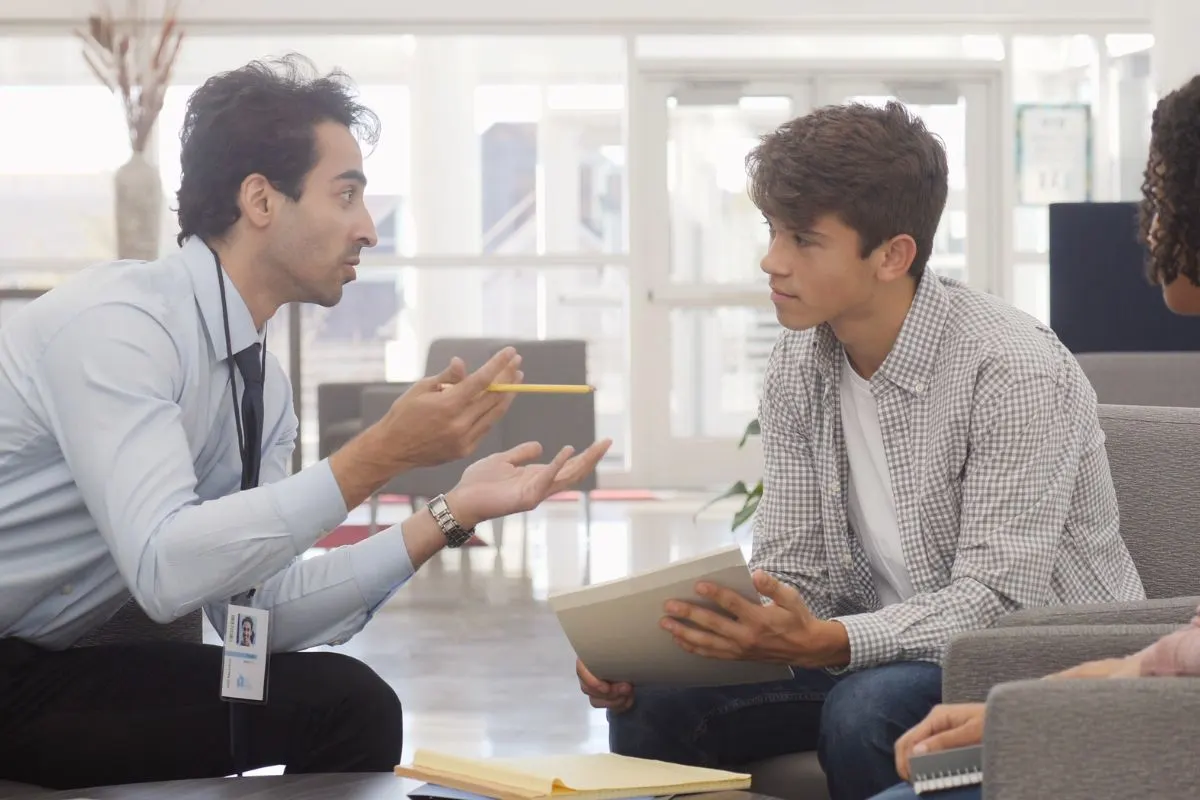Have you ever heard of PDA in schools but weren’t sure what it means? Public displays of affection (PDA) are something that is often frowned upon in public schools. But what exactly does it mean, and why is it discouraged?

Public displays of affection, or PDA, can be defined as any behavior that involves physical contact between two people in a romantic or sexual context.
They can range from holding hands to more intimate activities such as emotional conversations, kissing, and even sexual actions.
PDA is considered inappropriate for public settings because it can make others uncomfortable and distract them from the learning environment.
It’s important for parents and educators to understand what public displays of affection mean, so they can set clear expectations for students when they need to defer these types of behaviors while in school.
Here we’ll explore the definition of PDA, reasons against it, possible consequences of engaging in PDA, and how to discourage this behavior among students.
What Are The Basics Of PDA In Schools?
Public displays of affection, or PDA, is a term used to describe any form of physical contact between two people who are romantically involved with one another.
The type of contact can be as simple and innocent as holding hands, hugging, or even just standing close together.
While some forms of PDA may be considered fairly harmless and socially acceptable, more intimate forms such as kissing may be seen as inappropriate by many and considered grounds for disciplinary action, depending on the school environment in question.
Why Is It A Problem?
Overly affectionate behavior can be offensive to many people, though a couple caught up may not be aware that their actions are causing discomfort.
Because of this, it’s important for schools to educate their students, so they know what kind of embracing is permissible within their facility’s guidelines. Schools typically have a zero-tolerance stance on PDAs due to these reasons.
Schools are aware that even the most simple forms of PDA can end up developing into something that could put younger students at risk, so it’s important to educate students on the rules to avoid getting into trouble.
Students require guidance to understand what behaviors are appropriate for school environments, and should also learn strategies for avoiding conflict over PDA when it does occur.
How Exactly Can Schools Handle PDAs Appropriately?

Public displays of affection can cause great disruption in classrooms and other areas throughout a school.
To handle and forbid PDAs, schools should recognize they have a problem, define what types and levels of PDAs are not allowed, create a policy to explain this, distribute it to all students and staff, and provide training for faculty on how best to manage the situation if violations occur.
They should set consequences for disobedience of the school’s policy and take efforts to ensure all students understand what is appropriate behavior when it comes to PDAs.
It’s difficult to prohibit these occurrences when schools don’t exactly set any guidelines or expectations on appropriate behavior in the school environment.
Schools need not only to create rules but also to let students know in advance that any display of physical affection will result in some form of discipline or consequence.
Here we have an example of a policy that may be of use for a school to suggest appropriate behaviors for students to understand in a direct way.
All physical displays of affection (e.g., hugging, kissing) are strictly prohibited while on campus during school hours.
Any student found engaging in such behavior will be subject to disciplinary action as outlined by our code of student conduct policies.
What Can Parents Do?
Helping a child manage the physical and emotional triggers that lead to meltdowns during the school day is not simple.
It is important to recognize, however, that these highly visible and extremely stressful eruptions are an indication of a much deeper difficulty in communicating needs, understanding expectations, and developing appropriate behaviors.
At all times, it’s best to not be confrontational toward a student that is your child and to remain as calm as possible to deliver any information.
Meltdowns can lead to panic attacks, which can be harmful to mental health and can increase feelings of being overwhelmed. Reassurances are going to be more effective.
Direct demands will simply add pressure onto a child already feeling emotionally vulnerable, so it’s better instead to provide choices, e.g “would you like to put your shoes on here or there?”.
When talking and interacting with your child, shift your vocabulary from commands and directives towards communication in a more collaborative way – ‘Would you?’, ‘Could you?’ .
Finally, don’t forget that positive reinforcement works wonders – directly praise the child even if they struggle initially with hearing your words and if necessary reward achievements within their earshot where others can witness their successes.
Why Do Schools Environments Make It Worse?
Thus, it’s important that parents and schools work together collaboratively to help support them as much as possible.
Despite the fact that these children may appear very verbally competent, as a result of slower processing they may fail to understand everything being said to them.
Some students can be unable to understand direct orders like guidelines on PDAs which can be an issue with communication in the long run and don’t help either party.
This can lead to teachers perceiving them as being uncooperative or not wanting to engage, rather than recognizing it as a symptom of their PDA-related anxieties.
In this respect, specific intervention strategies for teachers should be devised in order for monitoring progress and promoting positive behavior changes.
Final Thoughts
PDA stands for Physical Displays of Affection and is strictly prohibited in school environments.
Schools should also work collaboratively with parents to help support PDA children as much as possible by devising specific intervention strategies and monitoring progress.
- Homeschooling In High School: Pros And Cons - February 24, 2024
- How Do I Withdraw My Child From School To Homeschool? - February 23, 2024
- How To Not Go Crazy Homeschooling Kids: A Guide For Frazzled Parents - February 22, 2024









Leave a comment